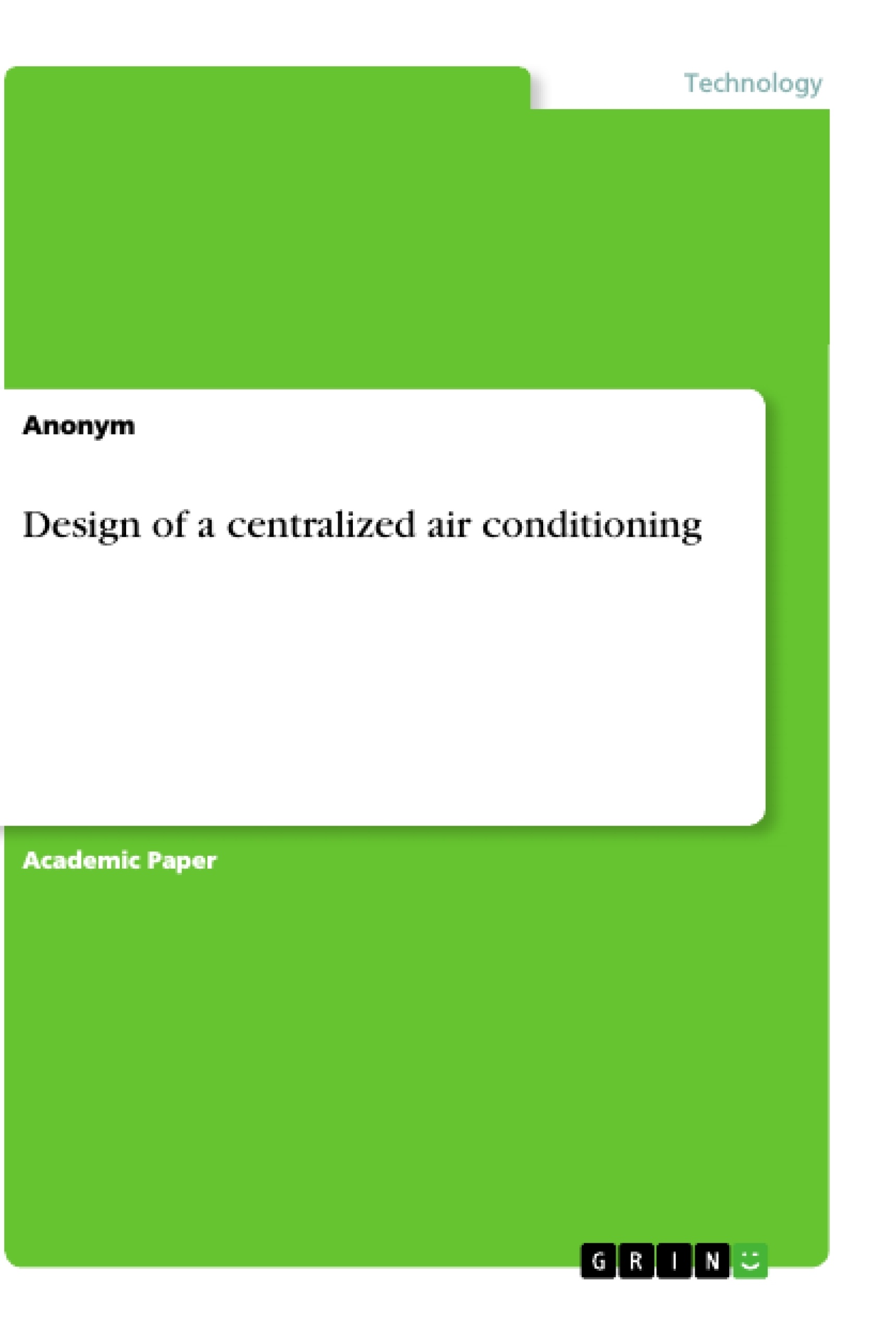The average summer temperatures experienced by most countries are increasing every year and consequently the energy needs to provide air-conditioning is also increasing annually. The HVAC industry has a challenging task of providing energy efficient technologies to satisfy this growing demand with a minimum impact on global warming and ozone depletion. The chilled water types of central air conditioning plants are installed in the place where whole large buildings, shopping mall, airport, hotel, etc, comprising of several floors are to be air conditioned. The project consists of how the proposed centralizes air conditioning is designed and its criterion for a new buildings in Hyderabad. It consists of 6 floors having an area of 4,000 sqft. Per floor.
The main objective is to create a thermally controlled environment within the space of a building envelope such as kitchen room, master bedroom, dining room etc. The tentative air conditioning load for the system shall be 290 TR approx. Air cooled chillers with pumping system are proposed to make the system energy efficient. The proposed air conditioning plant shall be located on the building terrace.
Inhaltsverzeichnis (Table of Contents)
- CHAPTER-1: INTRODUCTION
- 1.1 HVAC SYSTEM
- 1.2 BASIC REFRIGERATION CYCLE
- CHAPTER -2: LITERATURE REVIEW
- CHAPTER -3: REQUIREMENT ANALYSIS
- CHAPTER -4: ESTIMATION OF HEAT LOADS
- CHAPTER -5: CENTRALIZED AIR-CONDITIONING SYSTEMS
- CHAPTER -6: CHILLED WATER AIR-CONDITIONING SYSTEM
- CHAPTER -7: RESULT
Zielsetzung und Themenschwerpunkte (Objectives and Key Themes)
This paper aims to explain the steps involved in designing an air-conditioning (AC) system with proper heat load calculations. The objective is to develop a system that offers maximum efficiency at the lowest running cost. The paper focuses on various aspects of HVAC design, including heat load calculation, selection of appropriate equipment, and energy conservation.
- HVAC system design and its components
- Heat load calculations for efficient AC system design
- Energy conservation in HVAC systems
- Environmental impact and energy efficiency of AC systems
- Analysis of different air conditioning systems and their applications
Zusammenfassung der Kapitel (Chapter Summaries)
Chapter 1: Introduction introduces the concepts of HVAC systems and the importance of heat load calculations for designing an efficient AC system. It explains the basic refrigeration cycle and its components, including the condenser, compressor, evaporator, and expansion valve.
Chapter 2: Literature Review explores existing research on various aspects of HVAC systems and their impact on energy consumption and environmental sustainability. It examines studies analyzing energy consumption of room air conditioners (RACs) under different heat load conditions and evaluates consumer preferences for energy-efficient ACs.
Chapter 3: Requirement Analysis focuses on the specific requirements for designing an AC system based on factors such as the building's construction, surrounding environment, occupancy, and equipment present. It emphasizes the importance of selecting the appropriate equipment size and load capacity to ensure comfort and energy saving.
Schlüsselwörter (Keywords)
The paper focuses on HVAC systems, heat load calculations, energy conservation, air conditioning design, refrigeration cycle, environmental impact, energy efficiency, room air conditioners, and consumer preferences.
- Quote paper
- Anonym (Author), 2020, Design of a centralized air conditioning, Munich, GRIN Verlag, https://www.grin.com/document/592401



